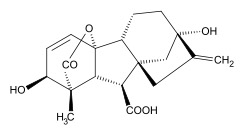
Contact us @ +91-98458 50494
Our Products
- Abamectin
- Acephate
- Acetamaprid
- Alpha Cypermethrin
- Bendiocarb
- Bifenthrin
- Buprofezin
- Chlorantraniprole
- Chlorfenapyr
- Chlorpyriphos
- Clothiandian
- Cyantraniliprole
- Cypermethrin
- Deltamethrin
- Diafenthiuron
- Diflubenzuron
- Dinotefuran
- Emamectin Benzoate
- Etoxazole
- Fenpyroximate
- Fipronil
- Hexaconozole
- Hexaflumuron
- Imidachloprid
- Indaxocarb
- Lambda Cyhalothrin
- Lufenuron
- Nitenpyram
- Ozamyl
- Profenofos
- Pymetrozine
- Spirodiclofen
- Thiamethoxam
- Tolfenpyrad
- Triazophos
- 6 Benzylaminopurine
- Brassionalide
- Chlormequat Chloride
- CPPU TC
- Diamonozide
- Giberllic Acid
- Natural Brassinolide
- Sodium Nitrophenalate
- Naphthylacetic Acid
- Indoleacetic Acid
- Naphthyl Acetamide
- Napthoxyacetic Acid
- Diethyl Aminoethyl Hexanoste
- Triacontanol(TRIA)
- 6-Furfurylaminopurine
- Forchlorfenuron
- Trans-Zeatin
- Regulox (Maleic hydrazide)
- Mepiquat chloride
- Thidiazution(TDZ)
- Gibberellic Acid
Our Products- Plant Growth Regulators
Giberllic Acid
 Gibberellic acid (also called Gibberellin A3, GA, and GA3) is a hormone found in plants and fungi. Its chemical formula is C19H22O6. When purified, it is a white to pale-yellow solid.
Gibberellic acid (also called Gibberellin A3, GA, and GA3) is a hormone found in plants and fungi. Its chemical formula is C19H22O6. When purified, it is a white to pale-yellow solid.
However, plants produce low amount of GA3, therefore this hormone can be produced industrially by microorganisms. Nowadays, it is produced by submerse fermentation, but this process presented low yield with high production costs and hence higher sale value. One alternative process to reduce costs of the GA3 production is Solid-State Fermentation (SSF) that allows the use of agro-industrial residues.
Gibberellic acid is a simple gibberellin, a pentacyclic diterpene acid promoting growth and elongation of cells. It affects decomposition of plants and helps plants grow if used in small amounts, but eventually plants develop tolerance to it GA stimulates the cells of germinating seeds to produce mRNA molecules that code for hydrolytic enzymes. Gibberellic acid is a very potent hormone whose natural occurrence in plants controls their development. Since GA regulates growth, applications of very low concentrations can have a profound effect while too much will have the opposite effect. It is usually used in concentrations between 0.01 and 10 mg/L.GA was first identified in Japan in 1935, as a metabolic byproduct of the plant pathogen Gibberella fujikuroi (thus the name), which afflicts rice plants; fujikuroi-infected plants developbakanae ("foolish seedling"), which causes them to grow so much taller than normal that they die from no longer being sturdy enough to support their own weight
Gibberellins have a number of effects on plant development. They can stimulate rapid stem and root growth, induce mitotic division in the leaves of some plants, and increase seed germination rate.
Gibberellic acid is sometimes used in laboratory and greenhouse settings to trigger germination in seeds that would otherwise remain dormant. It is also widely used in the grape-growing industry as a hormone to induce the production of larger bundles and bigger grapes, especially the Okanagan and Creston valleys, it is also used as a growth replicator in the cherry industry. It is used on Clementine Mandarin oranges, which may otherwise cross-pollinate with other citrus and grow undesirable seeds. Applied directly on the blossoms as a spray, it allows for Clementines to produce a full crop of fruit without seeds.
|
|
Names |
|
IUPAC name |
|
Identifiers |
|
CAS Registry Number |
|
Properties |
|
Chemical formula |
C19H22O6 |
Molar mass |
346.37 g/mol |
Melting point |
233 to 235 °C (451 to 455 °F; 506 to 508 K) (decomposition) |
Solubility in water |
5 g/l (20 °C) |
Hazards |
|
EU classification |
Irritant (Xi) |
R-phrases |
R36 |
S-phrases |
R26, S36 |
